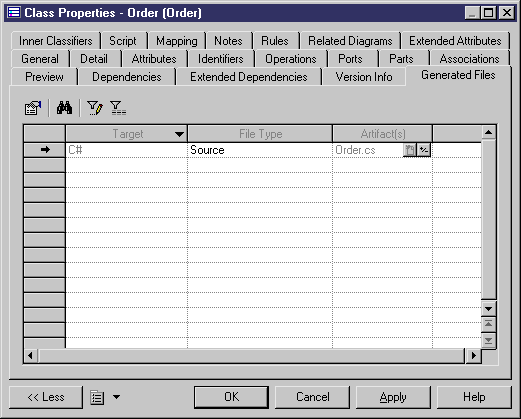Artifacts can replace the standard generation of files; by default, an artifact generates the same code as the generated file but only for selected instances of a metaclass.
An artifact has the following properties:
|
Property |
Description |
|---|---|
|
Name |
Name of the artifact. |
|
Comment |
Descriptive comment for the artifact. |
|
Stereotype |
Sub-classification used to extend the semantics of an object without changing its structure; it can be predefined or user-defined. |
|
Encoding |
Allows you to modify the default file encoding of the files to reverse engineer. |
An artifact definition also includes the following properties:
|
Property |
Description |
|---|---|
|
Template |
Template used to generate the content of the generated file. |
|
Objects |
List of objects associated with the current artifact. |
|
Prerequisites |
List of artifacts that must be generated before the current artifact. |
|
Preview |
Allows to visualize the generated code of the artifact. |
